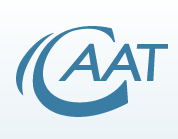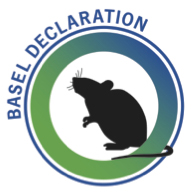
Animal testing, also known as animal experimentation, animal research, and in vivo testing, is the use of non-human animals, such as model organisms, in experiments that seek to control the variables that affect the behavior or biological system under study. This approach can be contrasted with field studies in which animals are observed in their natural environments or habitats. Experimental research with animals is usually conducted in universities, medical schools, pharmaceutical companies, defense establishments, and commercial facilities that provide animal-testing services to the industry. The focus of animal testing varies on a continuum from pure research, focusing on developing fundamental knowledge of an organism, to applied research, which may focus on answering some questions of great practical importance, such as finding a cure for a disease. Examples of applied research include testing disease treatments, breeding, defense research, and toxicology, including cosmetics testing. In education, animal testing is sometimes a component of biology or psychology courses.

In the animal rights movement, cruelty-free is a label for products or activities that do not harm or kill animals anywhere in the world. Products tested on animals or made from animals are not considered cruelty-free, since these tests are often painful and cause the suffering and death of millions of animals every year.

The Johns Hopkins University Center for Alternatives to Animal Testing (CAAT) has worked with scientists, since 1981, to find new methods to replace the use of laboratory animals in experiments, reduce the number of animals tested, and refine necessary tests to eliminate pain and distress. CAAT is an academic, science-based center affiliated with the Johns Hopkins Bloomberg School of Public Health.

The Animals Act 1986, sometimes referred to as ASPA, is an Act of the Parliament of the United Kingdom passed in 1986, which regulates the use of animals used for research in the UK. The Act permits studies to be conducted using animals for procedures such as breeding genetically modified animals, medical and veterinary advances, education, environmental toxicology and includes procedures requiring surgery, if certain criteria are met. Revised legislation came into force on 1 January 2013. The original act related to the 1986 EU Directive 86/609/EEC which was updated and replaced by EU Directive 2010/63/EU
Phytogenics are a group of natural growth promoters or non-antibiotic growth promoters used as feed additives, derived from herbs, spices or other plants. The term phytogenic feed additives was coined by an Austrian multinational feed additives company named Delacon, and was first introduced to the market in the 1980s.

The European Union Computer Programs Directive controls the legal protection of computer programs under the copyright law of the European Union. It was issued under the internal market provisions of the Treaty of Rome. The most recent version is Directive 2009/24/EC.
The Clinical Trials Directive is a European Union directive that aimed at facilitating the internal market in medicinal products within the European Union, while at the same time maintaining an appropriate level of protection for public health. It seeks to simplify and harmonise the administrative provisions governing clinical trials in the European Community, by establishing a clear, transparent procedure.

Alternatives to animal testing are the development and implementation of test methods that avoid the use of live animals. There is widespread agreement that a reduction in the number of animals used and the refinement of testing to reduce suffering should be important goals for the industries involved. Two major alternatives to in vivo animal testing are in vitro cell culture techniques and in silico computer simulation; however, some claim they are not true alternatives because simulations use data from prior animal experiments and cell cultures often require animal derived products, such as serum or cells. Others say that they cannot replace animals completely as they are unlikely to ever provide enough information about the complex interactions of living systems.
Michael Balls is a British zoologist and professor emeritus of medical cell biology at the University of Nottingham. He is best known for his work on laboratory animal welfare and alternatives to animal testing.

Animal testing regulations are guidelines that permit and control the use of non-human animals for scientific experimentation. They vary greatly around the world, but most governments aim to control the number of times individual animals may be used; the overall numbers used; and the degree of pain that may be inflicted without anesthetic.
Animals used by laboratories for testing purposes are largely supplied by dealers who specialize in selling them to universities, medical and veterinary schools, and companies that provide contract animal-testing services. It is comparatively rare that animals are procured from sources other than specialized dealers, as this poses the threat of introducing disease into a colony and confounding any data collected. However, suppliers of laboratory animals may include breeders who supply purpose-bred animals, businesses that trade in wild animals, and dealers who supply animals sourced from pounds, auctions, and newspaper ads. Animal shelters may also supply the laboratories directly. Some animal dealers, termed Class B dealers, have been reported to engage in kidnapping pets from residences or illegally trapping strays, a practice dubbed as bunching.
Fund for the Replacement of Animals in Medical Experiments (FRAME) is a charity based in Nottingham, UK. FRAME funds and promotes alternatives to animal testing.

The Basel Declaration is a call for greater transparency and communication on the use of animals in research. It is supported by an international scientific non profit society, the Basel Declaration Society, a forum of scientists established to foster the greatest dissemination and acceptance of the Declaration, and the dialogue with the public and stakeholders.

European Partnership for Alternative Approaches to Animal Testing (EPAA) promotes the application of the 3Rs principles in meeting regulatory requirements for products such as pharmaceuticals, chemicals, soaps, detergents and cosmetics. The EPAA covers research and development, as well as the use of 3Rs approaches in regulatory compliance and communication and dissemination.

The Three Rs (3Rs) are guiding principles for more ethical use of animals in product testing and scientific research. They were first described by W. M. S. Russell and R. L. Burch in 1959. The 3Rs are:
- Replacement:methods which avoid or replace the use of animals in research
- Reduction: use of methods that enable researchers to obtain comparable levels of information from fewer animals, or to obtain more information from the same number of animals.
- Refinement: use of methods that alleviate or minimize potential pain, suffering or distress, and enhance animal welfare for the animals used.
ALTEX: Alternatives to Animal Experimentation is a quarterly peer-reviewed scientific journal covering alternatives to animal experimentation and related issues of bioethics, seeking to promote the replacement, reduction, and refinement of animal use in research. It was originally published in German and established in 1984 as ALTEX: Alternativen zu Tierexperimenten and is published by Springer Spektrum on behalf of the Swiss Society ALTEX Edition.

William Moy Stratton Russell, also known as Bill Russell, was a British zoologist and animal welfare worker. He was best known for writing, along with R. L. Burch (1926-1996) The Principles of Humane Experimental Technique (1959), a landmark in the humane use of animals in research, education and testing. Russell and Burch introduced the concept of the Three Rs in the scientific community and provided a blueprint for combining animal welfare considerations and quality of research.

The European Convention for the Protection of Animals for Slaughter, also known as the Slaughter Convention, is an animal welfare treaty of the Council of Europe, adopted on 10 May 1979 in Strasbourg, and effective since 11 June 1982. It establishes ethical standards pertaining to animal slaughter, such as stunning.

The European Convention for the Protection of Vertebrate Animals used for Experimental and other Scientific Purposes, sometimes simply referred to as the animal experimentation convention or laboratory animals convention, is an animal welfare treaty of the Council of Europe regarding animal testing, adopted on 18 March 1986 in Strasbourg, and effective since 1 January 1991.











